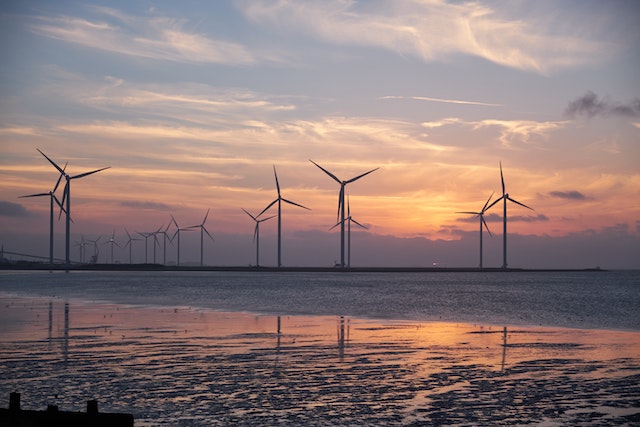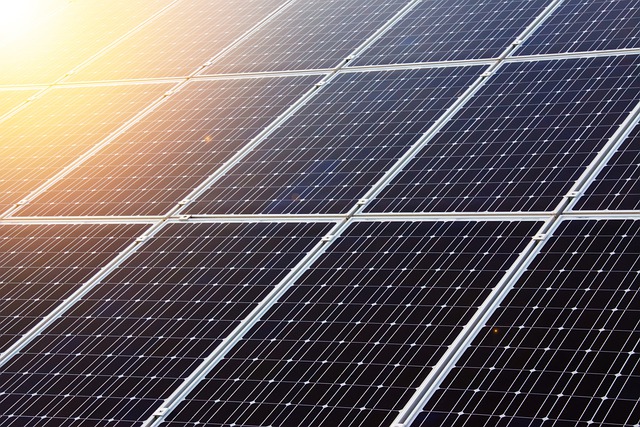Renewable Energy Definition
Renewable energy can be defined as a kind of energy that’s collected from renewable resources, which are naturally replenished on a human timescale. Now for the renewable energy definition and examples.
The most common examples of renewable energy include wind, rain, geothermal heat, waves, tides, sunlight, nuclear energy and waves.
Renewable energy frequently provides energy in four crucial areas: air and water heating/cooling, electricity generation, and rural (off-grid) energy services, transportation.
According to REN21’s 2017 report, renewables contributed 19.5 per cent to humans’ global energy consumption and also 24.5 per cent to their generation of electricity in 2016and 2017, respectively. Source
However, this energy consumption is divided as 8.9 per cent coming from traditional biomass, 4.3 per cent as heat energy (solar heat, modern biomass, and geothermal).
3.8 per cent from hydroelectricity and the remaining 2.3% is electricity from solar, geothermal, wind, and other forms of biomass.
Global investments in renewable technologies
Global investments in renewable technologies system amounted to more than US$278 billion in 2016.
Worldwide, there is an estimated 7.8 million employment associated with the renewable energy industries, also with solar photovoltaics being the best and largest renewable employer.
Moreover, renewable energy is rapidly becoming cheaper and efficient, and their share of total energy consumption is rising.
Generally, as of 2019, more than two-seconds of all new electricity power or capacity installed was renewable.
Also, growth in the use of oil and coal fuel sources could end by 2020 due to raised uptake of natural gas and renewables.
Renewable Resource Examples
Renewable resources can be replaced naturally and used frequently. This kind of energy theoretically never runs out.
Peradventure, the most common example of that, is “solar power.” Human will forever have solar energy, unless the sun stops to rise in the east.
Also, the two common examples are water and oxygen. The following are also renewable resource example.
- Alcohol: alcohol specifically ethanol, is derived from glucose. Most notably, alcohol is derived from the starch in corn kernels.
- Also, It can be harvested from wheat straw, switchgrass, and sugar cane, among other sources. Glucose is synthesized from water and carbon dioxide via photosynthesis.
Renewable Energy Definition
It is a renewable resource because the energy from the sun, however, captured during photosynthesis.
This generates power when combusted in the right amount, and usually blended with other fuels, this suffices to power a motor vehicle.
- Methane: This is natural gas.
- That is, it is always present in the air, and anytime you inhale, you are breathing in a small percentage of methane.
- It is also derived from livestock, greenhouse emissions, and other natural sources like wetlands.
However, when compared to its non-renewable counterparts, such as petroleum or coal, methane burns very cleanly.
It creates fewer toxic air contaminants and pollutants.
As such, methane can also be used for heating water in water heaters, cooking (as you might see in a gas stove), heating entire home, and powering generators.
- Geothermal Energy: It refers to capturing the heat trapped through or within the earth’s surface and also converting it to usable energy.
- However, it is a renewable resource because it is continuously being generated inside the earth. Likewise, geothermal heat pumps can cool and heat buildings.
- The most popular application of geothermal energy contains deep pumping cool water into the earth.
And the water is heated; naturally, the hot water is pumped back up to the surface, as well the resulting steam is also used to power turbines and other generators to create electricity.
A geothermal energy system can be used to power whole plants to engineer a host of goods for man consumption.
Renewable Energy Definition
Geothermal energy is extremely stable and predictable, making it a fan preferred in power plants.
Also, it facilitates energy planning with a high level of accuracy.
It’s also useful on a smaller scale as a renewable energy source for smaller buildings, such as homes in rural areas.
- Trees and Lumber: Trees are also a renewable resource.
- They can naturally reproduce as they germinate and drop seedlings on their own or they can be planted and harvested by humans.
- Without trees (and plants), humankind could not survive. They produce the oxygen humans need to breathe.
When breathing, you release carbon dioxide. Trees absorb that carbon dioxide only to release more oxygen, and so the cycle continues.
Beyond sustaining our very lives, we also based on trees for a broad different of reasons.
You burn wood to make heat. You also manufacture furniture and homes entirely out of lumber.
On a more lighter note, wood from trees is processed to produce the paper you write on. However, certain species of trees are more useful than others as an example of a renewable resource.
For instance, bamboo grows more rapidly than oak trees. So, their capacity to emit oxygen and, over time, create things from paper to houses is farther sustainable.
Bamboo is commonly seen as a viable and as well eco-friendly alternative to cotton and even plastic.
The importance of water
- Water: This is the first renewable resources discovered by man.
- As long as the sun rises in the east, it will be a renewable resource. The sun, however, heats the surface of rivers, oceans, lakes causing some water to evaporate.
- Then that water condenses into the clouds and also falls as snow and rain.
That snow and rain collect into rivers and streams, which ultimately or eventually drain into lakes and oceans, where the water will then evaporate all over again, thanks to the sun!
Then water can be used as hydropower.
This means extensive amounts of natural water can be reserved or stored in dams and flowing rivers to produce electricity in hydro-powered plants.
Additionally, the flowing water drives turbines, which in turn generates the electricity you use in your everyday lives.
Renewable Energy Resources

A renewable energy resource is a source of power that’s naturally replenished or renew on a human timescale.
While fuels like oil and coal are formed over thousands of years deep within the Earth, alternative energy sources such as wind and solar do not take years to build up and are quickly available for man use.
Renewable energy resources are the best alternatives to fossil fuels, as they are more cost effective to use and harvest, and they are less damaging to the environment.
It is important to reduce our greenhouse gas emissions in order to reduce the risk of climate change and global warming.
Most corporations, utilities, and house owners are already making the transition to the clean, renewable energy system.
What are Some Renewable Resources
Renewable Energy Definition – The era of alternative energy and renewable resources has arrived.
It is less expensive now than ever before to produce electricity from wind, hydropower, solar, and other examples of renewable resources.
This now catapults them from fringe options to the greatest-growing energy resources in the country.
In 2018, renewables set a record in the United States by producing 16% of all electricity, predominantly due to solar, wind, and hydropower.
What are some other examples of renewable energy?
- Alcohol: Can be used to produce biofuel
- Water: Serves as a drinking source but also as a hydropower necessity
- Methane gas – when methane occurs naturally in an environment (such as in manure) it can produce biogas
- Natural oils: (soybean oil, sunflower oil, vegetable oil, and palm oil) can all be used to make biodiesel
- Thermal generation: Such as geothermal heat pumps or solar thermal.
Renewable Sources
Renewable Energy Definition – Renewable sources are sources of energy that’s replenished continuously via natural processes.
Also, these resources are often referred to as renewable or alternative energy mainly because they’re a fuel option that can replace conventional non-renewable fossil fuels.
Fossil fuels, like coal and oil, generate energy when they’re burned, but their supply is restricted because they do not naturally fill on a short enough and adequate timescale for humans to use.
Five major technologies are considered renewable energy sources:

1. Solar energy: One of the most common types of renewable energy source is solar power. It comes from the sun, which supplies the entire man planet with the energy people need to survive.
Using solar panels, you can directly harvest energy from sunlight and convert it to electricity that powers your businesses or homes.
2. Hydroelectricity: You can create renewable energy from moving water just like a toy can from moving air.
Energy is produced when moving water runs via a turbine, spinning it to generate electricity.
However, this often happens at large waterfalls and dams, where water drops significantly in elevation.
Two significant places where hydroelectricity is generated are at Niagara Falls on the border between Canada and New York and the Hoover Dam on the Colorado River.
3. Wind power: Wind energy is another type of renewable energy that people interact with every day.
When you feel the wind, you are merely feeling air moving from place to place directly or due to the uneven heating of Earth’s surface.
4. Geothermal energy: Earth has a massive energy source involved within it.
Heat trapped when the planet formed, combined with the heat produced from radioactive or active decay in rocks deep beneath the crust, also results in a large amount of geothermal heat energy.
5. Biomass: One last example of a renewable energy source is biomass.
It is referred to any energy generated from recently living organic material such as animals and plants.
Biomass energy is a renewable source because plants can be regrown relatively rapidly, and they also grow using renewable energy system from the sun.
Renewable Resources
A renewable resource is a resource which can be replaced naturally and used frequently.
Renewable energy resources rarely run out, for instance: solar energy is powered by heat from the sun and never runs out.
Examples contain fresh air, biomass, oxygen, and solar energy.
Read my Article, Interesting facts about renewable energy for more information on clean energy sources
However, because of some irreversible and negative externalities in conventional energy generation, it’s necessary to promote and develop renewable energy supply technologies and demand for it.
Solar energy, and Hydro, wind, are the main renewable resources in most countries.
Recent Posts
Wind Energy and Its Economic Benefits for Local Communities Firstly wind energy has emerged as a powerful driver of economic development, particularly in local communities. It provides a...
Potential Energy in a Spring: Understanding the Fundamentals
Potential Energy in a Spring Firstly, understanding the potential energy in a spring is fundamental to grasping how energy is stored and transferred in various physical systems. Springs, as...



